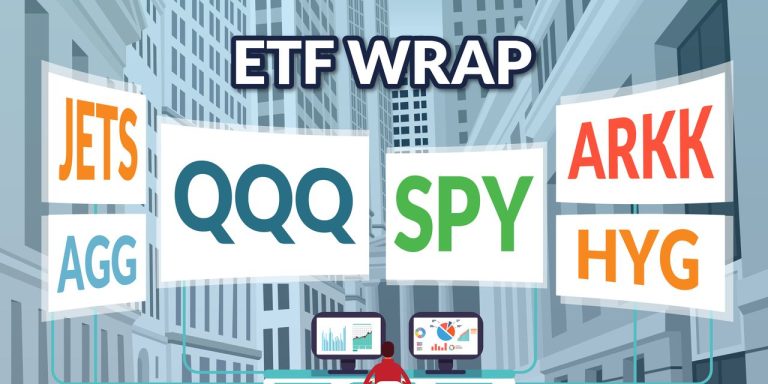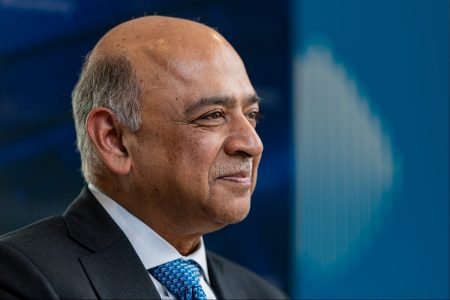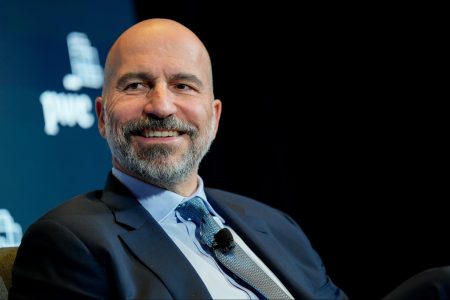Hi! For this week’s ETF Wrap I caught up with Rick Rieder, BlackRock’s chief investment officer of global fixed income, on how he’s approaching debt markets with his actively managed ETF in a bruising August for many bond funds.
Please send feedback and tips to [email protected] or [email protected]. You can also follow me on Twitter at @cidzelis and find me on LinkedIn. Isabel Wang is on Twitter at @Isabelxwang.
Sign up here for our weekly ETF Wrap.
Exchange-traded funds that buy bonds are feeling the heat of rising interest rates in August, with 2023 gains evaporating for some on pace for their biggest monthly losses since February.
BlackRock’s Rick Rieder has been navigating the tough fixed-income market with his recently launched BlackRock Flexible Income ETF
BINC,
which invests in debt globally and has seen a 1.2% total return since it began trading on May 23 through Wednesday, FactSet data show.
His actively managed ETF over that same stretch has outperformed popular funds that broadly track the U.S. investment-grade bond market, including so far this month.
Bond ETFs are struggling in August as Treasury yields have jumped, with 10-year rates this week climbing to their highest level in more than 15 years.
Meanwhile, “we kept our interest-rate exposure low” in the BlackRock Flexible Income ETF, with a duration of about two years, said Rieder, chief investment officer of global fixed income at BlackRock, in a phone interview. The fund is running a yield of around 7% by investing in a mix of government debt, corporate credit, and securitized assets including mortgages, he said.
“If you marry a high level of safe yield with some things that have some upside that are giving you enough cushion,” he said, “you can build balance in a portfolio.”
Popular index-tracking funds, the iShares Core U.S. Aggregate Bond ETF
AGG
and Vanguard Total Bond Market ETF
BND,
each lost 1.9% on a total return basis from May 23 through Wednesday, trailing the performance of Rieder’s active ETF since its launch. So far this month, both of those index funds have tumbled about 2%, while Rieder’s BlackRock Flexible Income ETF has slipped just 0.6% based on total return data from FactSet through Wednesday.
Earlier returns posted this year by the iShares Core U.S. Aggregate Bond ETF and Vanguard Total Bond Market ETF are largely wiped out after the recent climb in Treasury rates. Based on Thursday afternoon trading levels, the funds were about flat for the year on a total return basis, barely keeping in the green.
Ten-year Treasury yields finished Thursday at 4.307%, the highest level since November 2007 based on 3 p.m. Eastern Time levels, according to Dow Jones Market Data.
So far in August, the iShares Core U.S. Aggregate Bond ETF and Vanguard Total Bond Market ETF are heading for their worst monthly performance since February, according to FactSet data.
Meanwhile, the actively managed DoubleLine Opportunistic Bond ETF
DBND
has lost about 1.9% this month on a total return basis through Wednesday, FactSet data show. The fund was down in Thursday afternoon trading while clinging to a 0.8% total return for the year, according to FactSet data, at last check.
As for the hunt for yield, Rieder said “agency mortgages are a place we’ve been going” with the BlackRock Flexible Income ETF. Active funds can help people diversify away from indexes, while providing “some tactical management” in areas of fixed income that are harder for ordinary investors to reach, he said, such as mortgage-backed securities and high-yield bonds.
Rieder also likes the AAA-rated portion of collateralized loan obligations, or the safest piece of CLOs, which buy leveraged loans. His ETF holdings include high-yield and investment-grade corporate bonds, as well as U.S. government securities and emerging-market sovereign debt.
While the majority of assets in the BlackRock Flexible Income ETF are in the U.S., Rieder says yields on government debt in Mexico have been “great” at around 10% in some cases recently. “With inflation coming down there, we think the central bank will start cutting rates,” said Rieder, while the country appears to be “one of the big winners in de-globalization.”
As investors search for extra yield in the fixed-income market, including in riskier areas, “it has to be competitive” with the 5.5% yields on high-quality, short-duration Treasury bills
BX:TMUBMUSD06M
BX:TMUBMUSD03M,
said Rieder.
As usual, here’s your look at the top- and bottom-performing ETFs over the past week through Wednesday, according to FactSet data.
The good…
| Top Performers | %Performance |
|
VanEck Vietnam ETF VNM |
2.5 |
|
KraneShares Global Carbon Strategy ETF KRBN |
1.4 |
|
Invesco DB US Dollar Index Bullish Fund UUP |
0.9 |
|
SPDR S&P Metals & Mining ETF XME |
0.4 |
|
iMGP DBi Managed Futures Strategy ETF DBMF |
0.2 |
| Source: FactSet data through Wednesday, Aug. 16. Start date Aug. 10. Excludes ETNs and leveraged products. Includes NYSE, Nasdaq and Cboe traded ETFs of $500 million or greater |
….and the bad
| Bottom Performers | %Performance |
|
KraneShares CSI China Internet ETF KWEB |
-8.0 |
|
Invesco China Technology ETF CQQQ |
-8.0 |
|
iShares China Large-Cap ETF FXI |
-7.6 |
|
Invesco Solar ETF TAN |
-7.3 |
|
WisdomTree China ex-State-Owned Enterprises Fund CXSE |
-7.2 |
| Source: FactSet data |
New ETFs
-
Tema ETFs said Thursday that it launched the Tema Oncology ETF
CANC
and Tema Global Royalties ETF
ROYA,
both of which are actively managed thematic funds. -
Madison Investments announced on Aug. 15 the launch of its first exchange-traded fund, the Madison Dividend Value ETF
DIVL.
The actively managed ETF seeks to invest in “stocks with relative dividend yields that fall within the top 25% of their historic range,” focusing on high-quality companies, the firm said. -
YieldMax said Aug. 15 that it launched the YieldMax COIN Option Income Strategy ETF
CONY,
which aims to produce monthly income “via a synthetic covered call strategy” on Coinbase Global Inc.
COIN,
-3.14% .
Weekly ETF reads
Read the full article here









